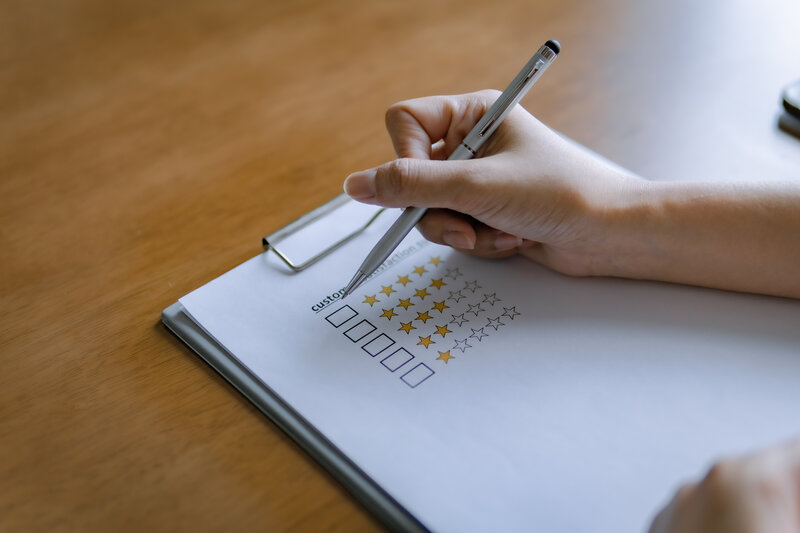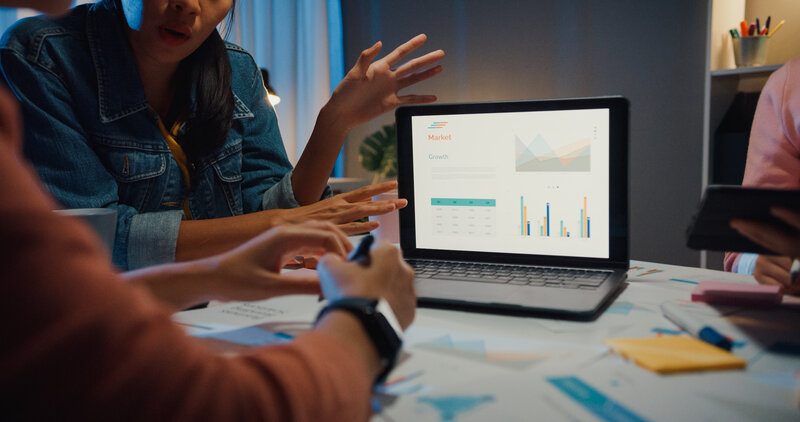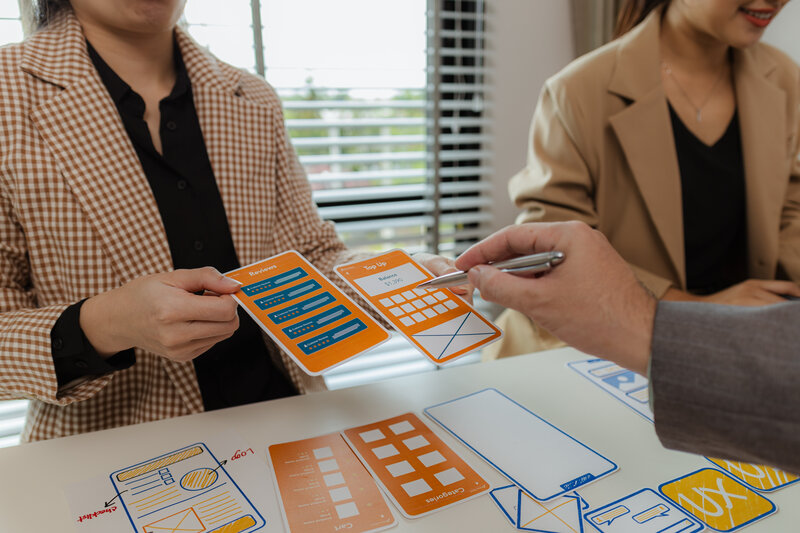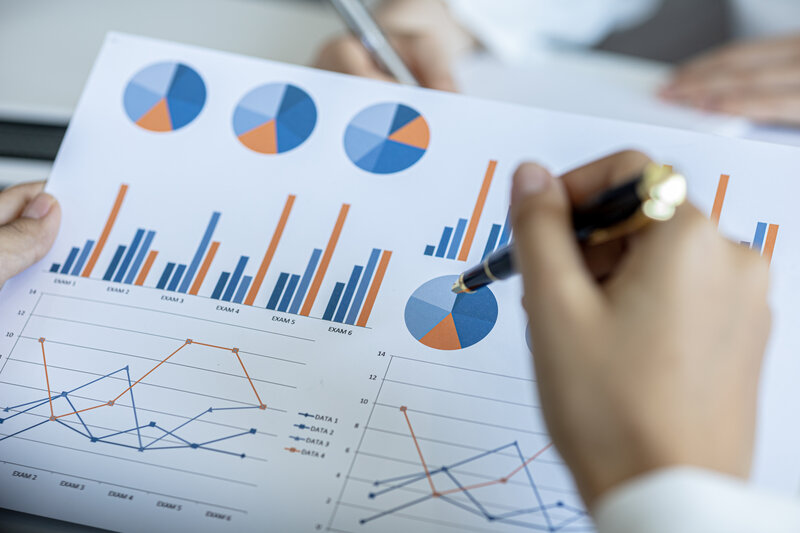
Sponsorships are crucial to an event. They provide the necessary financial support and enhance the overall event experience. However, securing and selling sponsorships for a B2B event is becoming increasingly challenging as more sponsors are demanding a better ROI and increased audience engagement. As an event organizer, offering logo placements or exhibit spaces for your event is no longer enough, as sponsors want data-driven insights that secure the long-term feasibility of their investment.
Attendee insights can help event organizers like you sell sponsorships by offering attendee demographics, engagement patterns, and behavioral data that aligns with their business goals. These data can tell sponsors who are attending the event, how they’re interacting, and what they’re interested in, making them more likely to invest in your event.
According to the software assortment platform Keevee, global spending on event sponsorships hit $96.4 billion in 2025. Additionally, based on an event industry statistic report from Swoogo, the sponsorship segment within the B2B event industry is expected to grow at a CAGR of 12.1% from 2021-28. Therefore, this article will explore how to leverage attendee insights to sell event sponsorships by understanding the important data types and how to collect, analyze, and present the data to sponsors.
Why Do Attendee Insights Matter For Sponsorship Sales?
Before you begin strategizing on collecting and using attendee insights to sell sponsorships, you need to understand how they’re relevant to your event. Attendee insights are simply the data collected about event attendees, including their demographics, interests, engagement levels, behaviors, and preferences. These insights show who’s attending the event and the nature of their interaction, making them valuable for event organizers and sponsors. Furthermore, according to an event organizing platform, Fielddrive, event organizers who leveraged event data analytics experienced a 30% increase in attendee engagement compared to those who did not, proving that attendee data enhances event engagement, making it an important selling point for sponsors.
A sponsor wants to ensure that their investment reaches the right audience. You can offer them detailed attendee insights, allowing them to shape their pitch and strategies to align with the audience’s expectations and interests, thereby connecting with the audience and maximizing their returns. This point has been reiterated by Risto Oksanen, CEO of RCBA Limited, in the Event Success Insights podcast with Chryssa Skodra, where he mentions that it’s extremely important for sponsors to understand the needs of their brand and the attendee insights to make an informed sponsorship proposal without wasting time. If you want to learn more about event sponsorship proposals, read this article: “A Step-by-Step Guide to Writing an Event Sponsorship Proposal That Gets Results”.
Moreover, attendee insights can help sponsors evaluate their ROI with clear performance metrics. Instead of vague numbers and estimations, sponsors can get real engagement data, like how many attendees visited their booths, participated in their sponsorship sessions, or showed interest in their products or services. This level of transparency and insight helps them close important deals and strengthen long-term relationships.
To learn more about how you can analyze attendee data, read this article: “How Event Data Analytics Can Help You Push Event Boundaries in 2025”.

What Are The Key Attendees’ Insights That Attract Sponsors?
Sponsors are interested in attendee data that tells them whether your event’s audience aligns with their ideal customer base. The following attendee insights can significantly boost sponsorship sales for your event:
- Demographics – Basic information about attendees’ job titles, industries, company sizes, and decision-making authority helps sponsors know if the event meets their target market and whether it’s feasible to invest.
- Engagement Data – This data informs attendees’ session attendance, booth visits, event app engagement, live poll participation, and more, helping sponsors learn about their audiences and create personalized strategies.
- Networking and Interactions – Data on which attendees are connecting with whom, the number of meetings they’ve scheduled, and engagement in networking and product-based sessions all signal high-intent buyers, making sponsorship sales more valuable.
- Purchase Intent Signals – These signals indicate crucial attendee behaviors indicative of high intent, like response to surveys, white paper downloads, and participation in product demonstrations.
As an event organizer, you can leverage these attendee insights to present sponsors with data-driven opportunities that align with their business objectives, making them amenable to investing in your event.
How To Collect And Analyze Attendee Insights?
Now that you know the important types of attendee insights and how they can impact your ability to sell sponsorships for your B2B event, let’s explore strategies to collect and analyze attendee data effectively. The more reliable the data, the more attractive the sponsorship opportunities become. The following are the best methods to collect and analyze attendee insights:
1. Using Event Registration Forms To Capture Key Data Points
Event registration forms are the simplest way to capture key attendee information. A well-designed registration form can provide crucial information about the attendees. You can incorporate custom fields and pre-event surveys and use a combination of qualitative and quantitative questions to enhance the data quality, making sponsorship opportunities more relevant. Your goal is to design the registration forms so that they can capture vital information from attendees that is relevant to the business goals of the sponsors, increasing your chances of selling sponsorships.
This strategy can be illustrated by an example of a B2B cybersecurity event. For instance, there’s a field in the registration form that asks the attendees about the biggest cybersecurity challenge. The responses can be turned into an anonymous report and presented to the sponsors, informing them about the need to tailor their booths, presentations, and networking pitches to resonate with the coming audiences. This helps both the sponsors and the attendees, enhancing your event experience.

2. Leveraging Event Apps & Engagement Platforms to Track Attendee Behavior
Event apps and engagement platforms track how attendees interact during the event, providing event organizers like you with real-time behavioral data. This data includes session attendance, booth activity, and in-app activity (content downloads, live poll participation, and networking connections). You can analyze this data to create detailed reports that provide sponsors with insights into attendee preferences and engagement patterns.
For example, a SaaS-focused B2B event uses an event app, allowing attendees to book sessions and interact with sponsors. From the app data, it is revealed that attendees interacted the most with AI-related sessions. Sponsors can use this insight to orient their promotional strategies to align with the attendees’ preferences. Visit this article for more information on event apps and how they impact your event engagement: “7 Best Conference Apps: The Must-Have Tools for Event Attendees”.
3. Utilizing Post-Event Surveys & Polls for Qualitative Insights
The quantitative data you got from the event registration forms and event app must be complemented with qualitative data you can get from post-event survey questions and polls. They provide a deeper insight into how attendees felt about the event, what they found most valuable, which sponsors stood out, and whether attendees are likely to purchase from a sponsor. Most importantly, these insights allow you to present data-backed recommendations to sponsors for future sponsorships and to refine their strategy.
This can be seen in this example where, after a B2B event is over, attendees are sent an event survey asking them about the sponsorship experience, rank the most impactful sponsors, and why. The responses revealed that sponsors who used interactive techniques to promote their products or services had better engagement. This insight can inform sponsors about adopting new techniques to enhance their sponsorship experience. Learn more about post-event surveys by reading this article, “53 Event Survey Questions For Maximum Responses”.

4. Integrating Data from CRM and Marketing Automation Tools
According to a Swoogo report, 79% of sponsors expect event organizers to provide high-quality event data for better audience targeting. You can meet that expectation by combining the data generated from CRM and marketing automation tools to track attendee behavior beyond the event. It can help you identify high-intent leads based on session attendance and event interactions. You can also automate follow-ups based on attendee preferences and measure long-term engagement and conversion rates. Overall, integrating the attendee data from two sources will give you a holistic understanding of attendee behavior that you can present to the sponsors.
For example, a crypto conference integrates data from CRM, marketing automation tools, and existing attendee data to track which attendees engage with sponsors. Based on this data, sponsors can craft a priority follow-up email to capture high-intent leads.
How To Package Attendee Insights Into Irresistible Sponsorship Offers?
Once you’ve collected the necessary attendee insights, the next step is to package and present the data to your sponsors. Presentations matter, as they can secure the sponsorship deal, so ensure that you turn raw data into actionable strategies and compelling sponsorship offerings. Here’s how to turn attendee insights into irresistible sponsorship offers:
1. Offering Sponsors Custom Data Reports on Attendee Interests
The main selling point of offering attendee insights to sponsors is to help them understand if your event audience aligns with their ideal customer profile. Providing them with an exclusive, customized data report of your attendee’ interests can enable them to make informed decisions and fine-tune their marketing approach. Your custom data report can include:
- Demographic data – Number of attendees, job titles, company sizes, industry, etc.
- Engagement data – Session attendance, booth visits, resource downloads, etc.
- Behavioral data – Networking preferences, sponsor preferences, product or service interests, etc.
You can refine this data to create a polished custom data report that can contain exclusive attendees’ insights before, during, and after the event. This will be valuable intelligence for the sponsors, helping them maximize their outreach. For example, a B2B tech summit provides its sponsor with an anonymous pre-event report informing them that 65% of the attendees are major decision-makers in IT industry firms. With this information, sponsors can tweak their strategies accordingly.

2. Providing Sponsors with Hyper-Personalized Sponsorship Packages
Instead of offering generic attendee data reports, you can go one step further to create and provide sponsors with custom sponsorship packages that align with their specific audience segments. Basically, you are creating a hyper-personalized sponsorship package based on different attendee segments, which in turn is based on demographic data. Since there are different types of attendees coming to an event, this approach increases the value and relevance of sponsorship opportunities by allowing different sponsors the option to choose multiple sponsorship packages that target specific attendee groups, aligning with their interests.
For example, sponsors willing to target only C-executives at your event might prefer curated sponsorship packages that contain relevant data and insights about that particular attendee group. The recommended strategy could be high-end networking lounges or VIP roundtables. Similarly, sponsors interested in mid-level professionals might have package-recommended content sponsorships or interactive demos.
Therefore, by creating a highly personalized sponsorship package based on audience groups, event organizers like you can attract and sell sponsors willing to pay a premium for targeted exposure.
3. Enabling Sponsors with Live Engagement Analytics
Offering sponsors access to real-time engagement data of your event allows them to optimize their event presence on the go. Live analytics can enable sponsors to change and tweak strategies as they see fit based on attendee engagement and interaction patterns. It will always keep them prepared and responsive to audiences’ expectations, enhancing the sponsorship experience. Some key insights that live engagement analytics can provide are booth traffic and dwell time, live session attendance trends, and live polling and Q&A data.
You can provide all these insights in the form of a dedicated dashboard or periodic updates, empowering sponsors to make data-driven decisions in your event.

4. Aligning Sponsorship Pricing with Attendee Engagement Metrics
One way you can package attendee insights for sponsors that make it a financially sound investment is by aligning your package pricing with the relevant engagement metrics. A sponsor might not need all the attendee data you’ve collected, and instead of paying a fixed fee, you can introduce a performance-based sponsorship pricing structure tied to actual attendee engagement, like the number of qualified leads generated, session attendance for sponsored content, and brand engagement metrics. This approach reduces risk for sponsors, ensuring they only pay for measurable results, making sponsorship opportunities more attractive, and increasing their confidence in your event.
For instance, a biotech summit offers a sponsorship model where sponsors pay a base fee and are then charged additional fees based on the number of attendees engaged with their content. At that summit, a sponsor hosting a workshop for medical innovations saw high engagement, making their investment worthwhile.
How To Present Attendee Insights To Potential Sponsors?
The final step in selling sponsorships using attendee insights is presentation. Turning all the raw data and the added layers of packaging into something attractive and presentable can make or break the deal. Sponsors need to know how the attendees’ insights help them get their returns on investment. The following are ways to package and present attendee data that drives sponsorship sales.
1. Creating Compelling Sales Decks with Attendee Data Highlights
A well-structured sales deck is a powerful way to showcase your attendee insights to secure sponsorship deals. The goal of this sales deck is to demonstrate why your event is a prime opportunity for sponsorship investment. As such, you need to present and structure crucial attendee data in the form of highlights, like attendee demographics, engagement data, and historical performance.
Another important component of creating a sales deck is to make it as visually appealing as possible. Use charts, tables, graphs, heat maps, and other forms of infographics that make it easier for sponsors to understand the value of your event’s audience. This is necessary because a sponsor won’t be going through a block of texts and hard data to figure out the relevance of your event; they will need visually appealing infographics that show the most important and relevant information to make the decision to invest in your event.

2. Crafting Case Studies to Showcase Past Success
Demonstrating cold data isn’t enough to persuade sponsors. You need to use storytelling to create compelling case studies that add credibility and emotional appeal to your presentation while staying true to your attendee data. The trick is to demonstrate how your attendees’ insights have benefited sponsors in the past, not just present numbers.
One way you can do that is by sharing your past records of how attendee insights have helped previous sponsors in your event, like creating a before-and-after comparison table, highlighting specific engagement metrics, and most importantly, testimonials from past sponsors. Creating a visually appealing presentation to showcase this data, like you’re telling a story, helps sponsors visualize your event’s impact on their brand.
For example, a real estate event organizer shares how their attendee insights have benefitted their previous sponsors by getting 50+ high-intent leads and closing multiple deals. This success story reassures new sponsors that this event will deliver a good ROI.
3. Demonstrating how Sponsors can Measure Their ROI Using Attendee Insights
According to Swoogo, sponsors want to know the ROI of your event and are increasingly looking for measurable audience engagement to determine which events to sponsor. This is highlighted by the fact that 65% of sponsors consider audience engagement a key metric when deciding on sponsorships. The best way to convince them and close the deal is by equipping them with an outline to track and measure their sponsorship success. Start by providing them a framework to evaluate their impact using attendee insights. This can be:
- Lead generation tracking – Number of qualified leads from booth visits and interactions.
- Brand visibility metrics – Event app impressions, website traffic, resource downloads, etc.
- Engagement benchmarks – Comparison of industry averages or your event’s past performance in benefiting the sponsors.
By offering sponsors a real-time dashboard or post-event report with these attendee insights, you are empowering them to track their investment, enhancing their trust in your event.

Key Takeaway
Selling sponsorships is an important part of fundraising for your event. The best way to improve your proposal for sponsorship deals is to leverage attendee insights. As an event organizer, providing sponsors with relevant audience information can enable them to enhance their sponsorship experience, which will suit the overall event.
One good thing for event marketers is that brands are realizing the importance of audience insights, as Jason Widup, Founder of Peak B2B, stated in a Zuddl podcast: “I think companies are recognizing that this is a way to showcase our brand. And so we really have to put our best foot forward. And so like expectations around attendees, you want them to leave with a polished, solid representation of what it’s gonna be like to work with you.”
Furthermore, Jennifer Feeney, Head of Event Sponsorships at The New York Times, in a Bizzabo podcast, says, “I think knowing your audience is key so that, you know, the cadence of how to approach them and what’s important to them. Some agencies can help target different industries that are investing a lot in different sponsorships.”
For similar articles on the topic of event sponsorships, read our articles “Everything You Need to Know On How To Get Event Sponsorship” or “Understanding the 11 Key Benefits of Event Sponsorship”. If you are interested in reading more about B2B events, visit our website, Eventible.



Comments are closed.